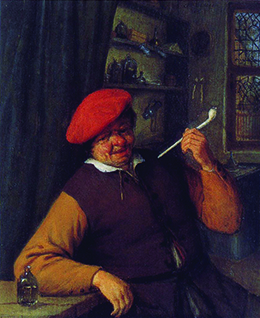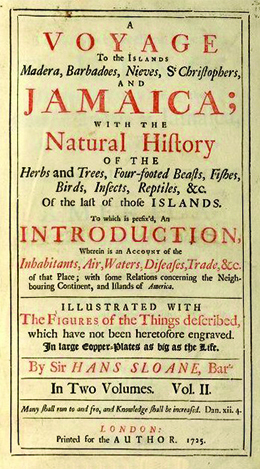| << Chapter < Page | Chapter >> Page > |
The influx of European materials made warfare more lethal and changed traditional patterns of authority among tribes. Formerly weaker groups, if they had access to European metal and weapons, suddenly gained the upper hand against once-dominant groups. The Algonquian, for instance, traded with the French for muskets and gained power against their enemies, the Iroquois. Eventually, native peoples also used their new weapons against the European colonizers who had provided them.
Explore the complexity of Indian-European relationships in the series of primary source documents on the National Humanities Center site.
The European presence in America spurred countless changes in the environment, setting into motion chains of events that affected native animals as well as people. The popularity of beaver-trimmed hats in Europe, coupled with Indians’ desire for European weapons, led to the overhunting of beaver in the Northeast. Soon, beavers were extinct in New England, New York, and other areas. With their loss came the loss of beaver ponds, which had served as habitats for fish as well as water sources for deer, moose, and other animals. Furthermore, Europeans introduced pigs, which they allowed to forage in forests and other wildlands. Pigs consumed the foods on which deer and other indigenous species depended, resulting in scarcity of the game native peoples had traditionally hunted.
European ideas about owning land as private property clashed with natives’ understanding of land use. Native peoples did not believe in private ownership of land; instead, they viewed land as a resource to be held in common for the benefit of the group. The European idea of usufruct—the right to common land use and enjoyment—comes close to the native understanding, but colonists did not practice usufruct widely in America. Colonizers established fields, fences, and other means of demarcating private property. Native peoples who moved seasonally to take advantage of natural resources now found areas off limits, claimed by colonizers because of their insistence on private-property rights.
Perhaps European colonization’s single greatest impact on the North American environment was the introduction of disease. Microbes to which native inhabitants had no immunity led to death everywhere Europeans settled. Along the New England coast between 1616 and 1618, epidemics claimed the lives of 75 percent of the native people. In the 1630s, half the Huron and Iroquois around the Great Lakes died of smallpox. As is often the case with disease, the very young and the very old were the most vulnerable and had the highest mortality rates. The loss of the older generation meant the loss of knowledge and tradition, while the death of children only compounded the trauma, creating devastating implications for future generations.
Some native peoples perceived disease as a weapon used by hostile spiritual forces, and they went to war to exorcise the disease from their midst. These “mourning wars” in eastern North America were designed to gain captives who would either be adopted (“requickened” as a replacement for a deceased loved one) or ritually tortured and executed to assuage the anger and grief caused by loss.
European expansion in the Americas led to an unprecedented movement of plants across the Atlantic. A prime example is tobacco, which became a valuable export as the habit of smoking, previously unknown in Europe, took hold ( [link] ). Another example is sugar. Columbus brought sugarcane to the Caribbean on his second voyage in 1494, and thereafter a wide variety of other herbs, flowers, seeds, and roots made the transatlantic voyage.

Just as pharmaceutical companies today scour the natural world for new drugs, Europeans traveled to America to discover new medicines. The task of cataloging the new plants found there helped give birth to the science of botany. Early botanists included the English naturalist Sir Hans Sloane, who traveled to Jamaica in 1687 and there recorded hundreds of new plants ( [link] ). Sloane also helped popularize the drinking of chocolate, made from the cacao bean, in England.

Indians, who possessed a vast understanding of local New World plants and their properties, would have been a rich source of information for those European botanists seeking to find and catalog potentially useful plants. Enslaved Africans, who had a tradition of the use of medicinal plants in their native land, adapted to their new surroundings by learning the use of New World plants through experimentation or from the native inhabitants. Native peoples and Africans employed their knowledge effectively within their own communities. One notable example was the use of the peacock flower to induce abortions: Indian and enslaved African women living in oppressive colonial regimes are said to have used this herb to prevent the birth of children into slavery. Europeans distrusted medical knowledge that came from African or native sources, however, and thus lost the benefit of this source of information.
The development of the Atlantic slave trade forever changed the course of European settlement in the Americas. Other transatlantic travelers, including diseases, goods, plants, animals, and even ideas like the concept of private land ownership, further influenced life in America during the sixteenth and seventeenth centuries. The exchange of pelts for European goods including copper kettles, knives, and guns played a significant role in changing the material cultures of native peoples. During the seventeenth century, native peoples grew increasingly dependent on European trade items. At the same time, many native inhabitants died of European diseases, while survivors adopted new ways of living with their new neighbors.

Notification Switch
Would you like to follow the 'U.s. history' conversation and receive update notifications?